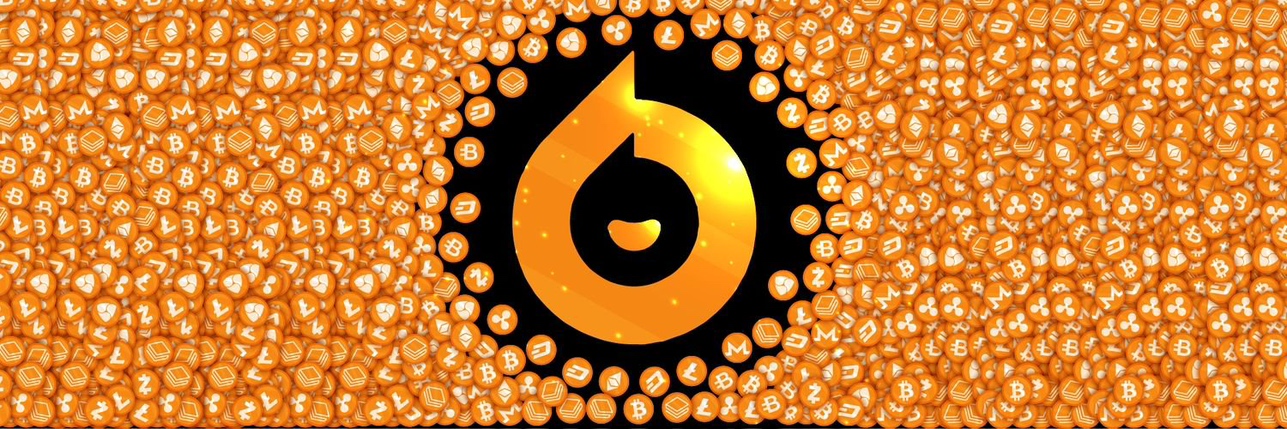Ethereum Price Prediction: Is ETH About to Break $2,000?
Ethereum (ETH) , the second-largest cryptocurrency by market cap, is starting to show fresh strength after months of sideways action. With renewed buying interest and improving technical signals, investors are wondering if Ethereum price is finally ready to push past key resistance levels. In this article, we will take a deep dive into the latest ETH charts, uncover the current market setup, and predict what could be next for Ethereum's price . Is a breakout around the corner, or should traders brace for another pullback? Let’s find out.
Ethereum (ETH) is slowly regaining strength after weeks of sideways movement. At the time of writing, ETH is trading around $1,816 according to the daily chart . Over the past few sessions, Ethereum has started to break above short-term moving averages like the 20-day and 50-day SMA, hinting at a shift in momentum. The ADL (Accumulation/Distribution Line) is also showing signs of recovery, suggesting that smart money could be moving back into ETH.
On the hourly chart, Ethereum has been trending upward from the $1,720 range, climbing smoothly above major support levels. However, a small pullback is visible, which is a normal reaction after a strong breakout. ETH is currently holding above key moving averages on the hourly timeframe, which supports the idea of a bullish continuation if buyers stay active.
Looking at the current structure, ETH price faces major resistance near the $1,800–$1,820 zone on the hourly chart, but it has already closed above this zone on the daily timeframe. This suggests that a retest of the $1,850 and even $1,900 levels could happen quickly if Bitcoin remains stable.
If momentum stays strong and Ethereum bulls defend the $1,780–$1,800 support region, the next logical target becomes $2,000, which is not far now. Traders should watch for volume spikes because a strong volume breakout above $1,900 would be the final push needed to flip $2,000 into a new support base.
Given the current trend and based on technical chart structure:
However, if the $1,800 support fails and ETH price drops back below $1,750, the bullish case would weaken, and ETH might consolidate longer between $1,700–$1,850.
With ETH trading just under $1,820 and building strength, a breakout strategy makes sense for aggressive traders. Conservative investors might wait for a clean daily close above $1,850 to confirm a true reversal. Considering that Ethereum price was above $4,000 in the previous cycle, today's prices offer a solid risk-reward ratio for long-term believers.
A simple calculation: If Ethereum price returns to $3,500 by the end of the year, a $1,000 investment today at $1,816 would become roughly $1,927 — more than double your money.
Ethereum’s price action is showing early signs of a bullish comeback. While risks still exist, the charts are finally leaning more in favor of the bulls. If ETH breaks $2,000 with strong volume, it could signal the start of a powerful new rally. For now, Ethereum looks ready to heat up again — and it might be sooner than many expect.
Ethereum (ETH) , the second-largest cryptocurrency by market cap, is starting to show fresh strength after months of sideways action. With renewed buying interest and improving technical signals, investors are wondering if Ethereum price is finally ready to push past key resistance levels. In this article, we will take a deep dive into the latest ETH charts, uncover the current market setup, and predict what could be next for Ethereum's price . Is a breakout around the corner, or should traders brace for another pullback? Let’s find out.
Ethereum (ETH) is slowly regaining strength after weeks of sideways movement. At the time of writing, ETH is trading around $1,816 according to the daily chart . Over the past few sessions, Ethereum has started to break above short-term moving averages like the 20-day and 50-day SMA, hinting at a shift in momentum. The ADL (Accumulation/Distribution Line) is also showing signs of recovery, suggesting that smart money could be moving back into ETH.
On the hourly chart, Ethereum has been trending upward from the $1,720 range, climbing smoothly above major support levels. However, a small pullback is visible, which is a normal reaction after a strong breakout. ETH is currently holding above key moving averages on the hourly timeframe, which supports the idea of a bullish continuation if buyers stay active.
Looking at the current structure, ETH price faces major resistance near the $1,800–$1,820 zone on the hourly chart, but it has already closed above this zone on the daily timeframe. This suggests that a retest of the $1,850 and even $1,900 levels could happen quickly if Bitcoin remains stable.
If momentum stays strong and Ethereum bulls defend the $1,780–$1,800 support region, the next logical target becomes $2,000, which is not far now. Traders should watch for volume spikes because a strong volume breakout above $1,900 would be the final push needed to flip $2,000 into a new support base.
Given the current trend and based on technical chart structure:
However, if the $1,800 support fails and ETH price drops back below $1,750, the bullish case would weaken, and ETH might consolidate longer between $1,700–$1,850.
With ETH trading just under $1,820 and building strength, a breakout strategy makes sense for aggressive traders. Conservative investors might wait for a clean daily close above $1,850 to confirm a true reversal. Considering that Ethereum price was above $4,000 in the previous cycle, today's prices offer a solid risk-reward ratio for long-term believers.
A simple calculation: If Ethereum price returns to $3,500 by the end of the year, a $1,000 investment today at $1,816 would become roughly $1,927 — more than double your money.
Ethereum’s price action is showing early signs of a bullish comeback. While risks still exist, the charts are finally leaning more in favor of the bulls. If ETH breaks $2,000 with strong volume, it could signal the start of a powerful new rally. For now, Ethereum looks ready to heat up again — and it might be sooner than many expect.
Why ZKsync’s founder believes Ethereum’s real strength lies in staying neutral
Alex Gluchowski, founder of ZKsync and CEO of Matter Labs, believes Ethereum continues to hold a strong product-market fit as the “world computer” of the decentralized economy. In a recent statement, Gluchowski emphasized that while decentralized versions of platforms like Nasdaq and SWIFT may emerge, Ethereum remains the true foundation and moat for the Internet of Value.
According to Gluchowski, Ethereum’s credible neutrality is its core strength. He stressed that as long as Ethereum maintains its position as a secure, neutral base layer, value will flow directly or indirectly into ETH.
Gluchowski acknowledged that future global transaction and payment infrastructures will not depend on a single blockchain—just as today’s internet does not rely on a single server. Instead, Ethereum’s future lies in serving as a foundational settlement layer for a vast network of decentralized blockchains.
He also urged Layer-2 developers to focus on Ethereum’s forward trajectory rather than its past. Gluchowski noted that future-ready Layer-2 designs must align with Ethereum’s evolving architecture, especially in light of new proposals from Ethereum’s leadership.
Related: Ripple’s XRP Ledger to Get Smart Contracts, EVM Compatibility
Gluchowski’s remarks follow a major proposal from Ethereum co-founder Vitalik Buterin. Posting on Ethereum’s core developer forum, Buterin suggested replacing the Ethereum Virtual Machine (EVM) with RISC-V, an open-source computing architecture known for its built-in encryption and technical flexibility.
The EVM currently supports Ethereum’s smart contract ecosystem and has been crucial to its success. Several Layer-2 networks and independent blockchains use EVM standards to maintain compatibility with Ethereum applications.
Related: Vitalik Buterin Proposes Replacing Ethereum EVM with RISC-V for Future Scaling
According to Buterin, adopting RISC-V could improve the efficiency of Ethereum’s execution layer and help resolve long-standing scalability challenges. He also highlighted that this move could simplify the design of the execution layer for future upgrades.
Gluchowski confirmed that ZKsync has been preparing for Ethereum’s proposed architectural changes. He indicated that the Layer-2 project would soon announce developments aligned with this vision.
Gluchowski hinted that updates from ZKsync could arrive within the next two weeks, signaling an active push toward readiness for Ethereum’s next phase of growth.
Disclaimer: The information presented in this article is for informational and educational purposes only. The article does not constitute financial advice or advice of any kind. Coin Edition is not responsible for any losses incurred as a result of the utilization of content, products, or services mentioned. Readers are advised to exercise caution before taking any action related to the company.
Solv Protocol Rolls Out FragBTC for Native BTC Yield on Solana
Solv Protocol is making a splash in the DeFi space by launching FragBTC , the first Bitcoin (BTC) restaking token that can generate direct yields on the Solana network. This move is part of Solv’s efforts to revive BTC that has so far only been “parked” without much benefit in its holders’ wallets.
We’re proud to introduce fragBTC, @solana ’s first native yield-bearing Bitcoin!
A liquid restaking BTC, powered by SolvBTC.JUP, co-launched with @fragmetric & @ZeusNetworkHQ .
The next chapter for Bitcoin on Solana begins here 🧵👇 pic.twitter.com/K6LfaA5JZS
— Solv Protocol (@SolvProtocol) April 25, 2025
On the other hand, FragBTC is not just here to beautify your crypto portfolio. This token allows users to maintain full exposure to BTC, while still earning yields through a Solana-based strategy, namely SolvBTC.JUP.
This strategy utilizes Jupiter Exchange and JLP pools to create local income in BTC , without having to rely on cross-chain solutions that are usually full of risks. Not only that, Solv Protocol also strengthens its position by becoming the first Institutional Guardian for the Zeus Network, demonstrating their commitment to security and transparency.
Furthermore, this move is even more interesting when combined with news from last January, when CNF reported that BingX Launchpad would be the exclusive place for the SOLV token to debut. This opens up a new avenue for unique participation in Solv Protocol’s DeFi innovation.
Imagine if all the BTC assets that have been dormant could be activated on Solana, the impact on liquidity and the growth of DeFi would certainly be extraordinary.
However, in early January 2025, the protocol was hit by allegations of Total Value Locked (TVL) manipulation after reports emerged of an increase in TVL values that were considered unreasonable. Although no strong evidence has been published, this controversy has disturbed public trust in the data they present.
In response, Solv took concrete steps to repair their reputation. They conducted a thorough audit of their smart contracts through an independent security firm and implemented a liquidity protection mechanism. The goal is simple: to protect users from unfair liquidation due to market volatility, while rebuilding community trust.
In March 2025, Solv raised US$10 million through the initial launch of the Bitcoin Reserve Offering (BRO). BRO combines the concept of convertible bonds with Bitcoin-based innovation, encouraging wider institutional adoption.
The funds were allocated to develop products such as SolvBTC and Liquid Staking Tokens (LST), as well as expand the Bitcoin-based DeFi ecosystem.
Now, Solv seems to be reaping the rewards. At the time of writing, the SOLV token was recorded to have strengthened 10% in the last 24 hours, trading at about $0.03492. A small note that might make many people rethink the opportunities behind this one project.



 Precio más bajo
Precio más bajo Precio más alto
Precio más alto 









































